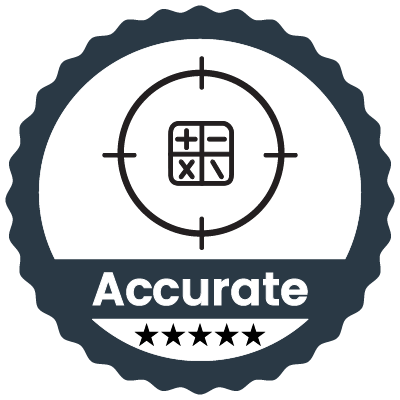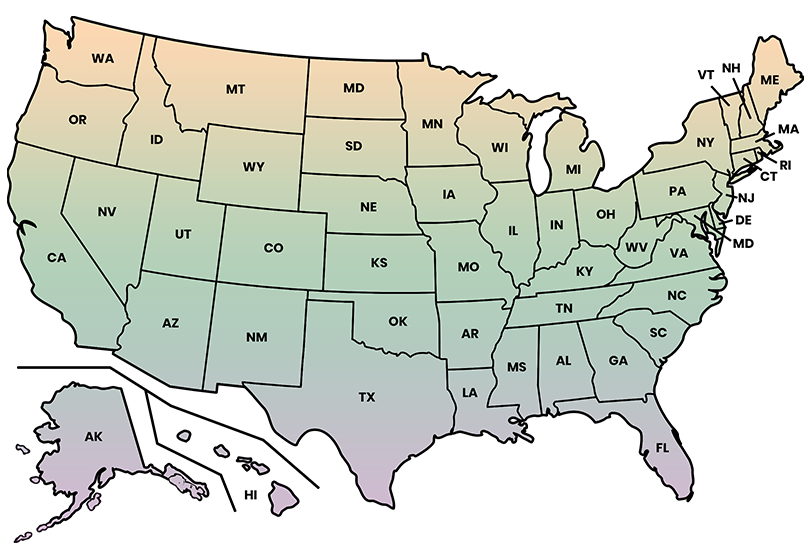Create Your Paystub in 3 Easy Steps



- 1. Provide Information
- 2. Preview Paystub
- 3. Download Stub!
Learn all about SUTA (State Unemployment Tax Act) and why it's important for your business's payroll and tax management. Whether you're a small business owner, an HR professional, or just want to understand how SUTA works, this guide gives you the key information and helpful resources you need to stay informed and compliant.
Table of Contents
What is SUTA Tax?
SUTA (State Unemployment Tax Act) is a payroll tax that employers pay to help fund unemployment benefits for workers who lose their jobs. It is a state-specific tax, meaning each state sets its own rate and rules, which can be easily tracked using a paystub generator. The amount employers pay often depends on factors like their industry, the number of unemployment claims they’ve had, and the state’s unemployment fund status.
The taxes collected from SUTA go towards providing financial assistance to eligible workers during times of unemployment. This temporary support helps workers while they look for new jobs. While the federal government has a separate unemployment tax (FUTA), SUTA is managed by individual states, each with its own tax rates and requirements.
What Is SUTA Wage Base?
The SUTA Wage Base is the maximum amount of an employee's earnings that can be taxed under the State Unemployment Tax Act within a specific period, typically a calendar year. Once an employee’s wages reach this limit, any additional earnings are not subject to SUTA tax. This threshold is set by each state and can vary, meaning that the taxable wage cap in one state may be different from that in another.
Who Pays SUTA?
Employers are primarily responsible for paying SUTA taxes. These taxes are solely the employer's responsibility and are not deducted from employees' wages. However, there are a few exceptions: in Alaska, New Jersey, and Pennsylvania, employees are also required to make SUTA contributions.
2025 SUTA Rates for Employees:
- Alaska: Employees contribute 0.50% of their wages, up to the wage base of $51,700.
- New Jersey: Employees contribute 0.3825% of their wages, up to the wage base of $43,300.
- Pennsylvania: Employees contribute 0.07% of their wages, up to the wage base of $10,000. Understanding SUTA rates and taxable wage bases can help businesses accurately budget for these expenses
Understanding SUTA rates and taxable wage bases can help businesses accurately budget for these expenses and ensure the correct amounts are reflected on each paystub.
How to Calculate SUTA Tax?
Calculating your SUTA tax liability involves several straightforward steps:
- Determine the Taxable Wage Base:
Each state sets a maximum limit on the wages subject to SUTA tax. For example, if the wage base is $7,000, only the first $7,000 of an employee’s wages is taxable. - Identify Each Employee’s Taxable Wages:
For each employee, calculate their wages within the tax period. If an employee’s wages exceed the wage base, only the amount up to the wage base is considered. - Apply the SUTA Tax Rate:
Multiply the taxable wages by your business’s SUTA tax rate (which varies by state and other factors). - Sum the Taxes:
Repeat for all employees and add the amounts together to determine your total SUTA tax liability.
SUTA calculating formula:
SUTA formula:
SUTA Tax for an Employee=min (Employee’s Wages, Wage Base) ×SUTA Tax Rate
Example Calculation:
If an employee earns $8,000, but the wage base is $7,000, and your SUTA rate is 3%, the calculation would be:
Tax =$7,000×0.03 =$210
Why is SUTA Important?
SUTA is essential for both employers and employees:
- For Employers: It's important to follow SUTA rules to avoid penalties. Paying SUTA taxes on time and correctly reporting wages helps businesses stay compliant, budget accurately, and plan for future costs.
- For Employees: SUTA supports workers by funding unemployment benefits. If employees lose their jobs, these benefits provide financial relief while they search for new employment.
State-by-State SUTA Tax Rates and Wage Base Limits for 2025
SUTA tax rates and taxable wage bases vary by state, affecting employer contributions to unemployment insurance. Below is a breakdown of 2025 SUTA tax rates and wage limits for each state.
| State | Experienced Employer Tax Rate 2025 | 2025 New employer UI tax rate | 2025 Taxable Wage base |
|---|---|---|---|
| Alabama | 0.20% to 5.40% | 2.70% | $8,000 |
| Alaska | 1.00% to 5.40% + Employee rate is 0.50% | 1.00% + Employee rate is 0.50% | $51,700 |
| Arizona | 0.04% to 9.72% | 2.00% | $8,000 |
| Arkansas | 0.200% to 10.100% | 2.0% (1.9% + administrative assessment of 0.1% for 2025.) | $7,000 |
| California | 1.50% to 6.20% | 3.40% | $7,000 |
| Colorado | 0.64% to 8.68% | 1.53% | $27,200 |
| Connecticut | 0.1% to 10.0% | 2.2% | $26,100 |
| Delaware | 0.10% to 5.40% | 1.0% | $12,500 |
| Florida | 0.10% to 5.40% | 2.70% | $7,000 |
| Georgia | 0.04% to 8.10% | 2.64% | $9,500 |
| Hawaii | 0.00% to 5.60% | 2.40% | $62,000 |
| Idaho | 0.225% to 5.4% | 1.00% | $55,300 |
| Illinois | 0.20% to 7.850% | 3.41% | $13,916 |
| Indiana | 0.50% to 7.40% | 2.50% | $9,500 |
| Lowa | 0.00% to 7.00% | 1.00% | $39,500 |
| Kansas | 0.00% to 6.65% | Construction industry: 5.55% All other industries: 1.75% | $14,000 |
| Kentucky | 0.30% to 9.00% | 2.70% | $11,700 |
| Louisiana | 0.09% to 6.00% | The tax rates are varies assigned based on industry | $7,700 |
| Maine | 0.00% to 5.97% | 2.11% | $12,000 |
| Maryland | 0.30% to 7.50% | 2.60% | $8,500 |
| Massachusetts | 0.83% to 12.65% | Non-Construction Industry: 2.13% (based on UI Tax Rate Schedule D) Construction Industry (NAICS code 23): 5.45% | $15,000 |
| Michigan | 0.06% to 10.3% | 2.70% | $9,000 or $9,500 for delinquent employers |
| Minnesota | 0.40% to 9.30% | Tax Rate for New Employers are assigned based on industry: Check Current Rates | $43,000 |
| Mississippi | 0.00% to 5.40% | start-up businesses have a tax rate of 1.00% in the first year, 1.10% in the second, and 1.20% from the third year onward until eligible for a modified rate. | $14,000 |
| Missouri | 0.0% to 5.40% | For 2025, the tax rate is 2.376% for Mining, Construction, and most industries, while nonprofits (501(c)(3)) pay 1.00%. | $9,500 |
| Montana | 0.00% to 6.12% | The tax rates are varies assigned based on industry -Check current rates | $45,100 |
| Nebraska | 0.00% to 5.40% | Non-construction: 1.25% Construction: 5.40% | Category 12: Pays 0.88% on the first $9,000 in wages. Category 20: Pays 5.40% on the first $24,000 in wages. |
| Nevada | 0.25% to 5.40% | 2.95% | $41,800 |
| New Hampshire | 0.10% to 7.00% | 2.7%, with quarterly adjustments | $14,000 |
| New Jersey | Worker Unemployment Insurance -0.003825 Workforce Development/Supplemental Workforce Funds -0.000425Worker - Governmental Reimbursable Employer Unemployment Insurance -0.000825 Workforce Development/Supplemental Workforce Funds -0.000425- give this in short | Unemployment Insurance -0.029825 Workforce Development/Supplemental Workforce Funds - 0.001175 | $43,300 |
| New Mexico | 0.33% to 5.40% | Rate of either their industry average U.I. rate or 1%, whichever is higher. | $33,200 |
| New York | 2.025% to 9.825% | 4.025% | $12,800 |
| North Carolina | 0.06% to 5.76% | 1% | $32,600 |
| North Dakota | 0.08% to 9.69% | Non-construction: 1.03% (positive) / 6.09% (negative) after June 30, 2023. Construction: 9.69% (both) after June 30, 2022. | $45,100 |
| Ohio | 0.4% to 10.1%(a mutualized rate of 0.1%) | New employers pay 2.7% unemployment tax, except construction employers, who pay 5.6% in 2025. | $9,000 |
| Oklahoma | 0.30% to 9.20% | 1.50% | $28,200 |
| Oregon | 0.90% to 5.40% | 2.4% | $54,300 |
| Pennsylvania | 0.75% 8.95% | 3.8220% | $10,000 |
| Rhode Island | 1.1% to 9.7%, reduced by 0.21% for the Job Development Assessment. | The new employer rate for 2025 will be 1.21%, reduced by 0.21% for the Job Development Assessment. | $29,800 or $31,300 for high tax group employers |
| South Carolina | 0.00% to 5.40% | New employers in South Carolina pay the tax rate for class 12 or 1%, whichever is higher, based on the current year's contribution table. | $14,000 |
| South Dakota | 0.00% to 8.80% | 1.20% | $15,000 |
| Tennessee | 0.01% to 10% | 2.70% | $7,000 |
| Texas | 0.25% to 6.25% | NAICS industry average or 2.7 percent, whichever is higher | $9,000 |
| Utah | 0.2% to 7.2% | Based on their industry's average benefit ratio, out-of-state contractors face a 7.2% rate unless they buy an existing business. | $48,900 |
| Vermont | 0.4% to 5.4% | 1.00% | $14,800 |
| Virginia | 0.10% to 6.20% | 2.50% | $8,000 |
| Washington | 0.00% to 5.40% | The tax rates are varies assigned based on industry | $72,800 |
| West Virginia | 1.50% to 7.50% | 2.70% | $9,500 |
| Wisconsin | 0.00% to 10.7% | 2.50% | $14,000 |
| Wyoming | 0.14% to 10.00% | The tax rates are varies assigned based on industry | $32,400 |
SUTA tax Fraud Penalties
SUTA fraud can lead to serious penalties for both employers and employees:
- 15% Penalty: A minimum 15% penalty on the fraudulent amount.
- Criminal Charges: Fines or jail time for those found guilty.
- Repayment: Fraudulently collected benefits must be paid back.
- Loss of Benefits: Permanent ineligibility for future unemployment benefits.
- Federal Prosecution: Serious cases may result in federal charges. States enforce these penalties, so it’s important to follow the rules to avoid costly consequences.
States enforce these penalties, so it’s important to follow the rules to avoid costly consequences.
Generate Accurate Pay Stubs with Ease
Staying compliant is essential for every small business. Ensure accuracy and avoid penalties by using our tool to create paystub effortlessly and compliantly.
Why Choose Our Pay Stub Generator?
- User-Friendly Interface: SecurePayStubs lets you create pay stubs quickly without any hassle.
- Customization: Tailor pay stubs to fit your business needs and branding.
- Instant Access: Generate and download pay stubs instantly for your records.
Stay Compliant and Confident
Don’t let complex rules slow you down. Use our tool to create precise, reliable pay stubs and keep your business moving forward.
This article has been updated from its original publication date of May 27, 2025.




